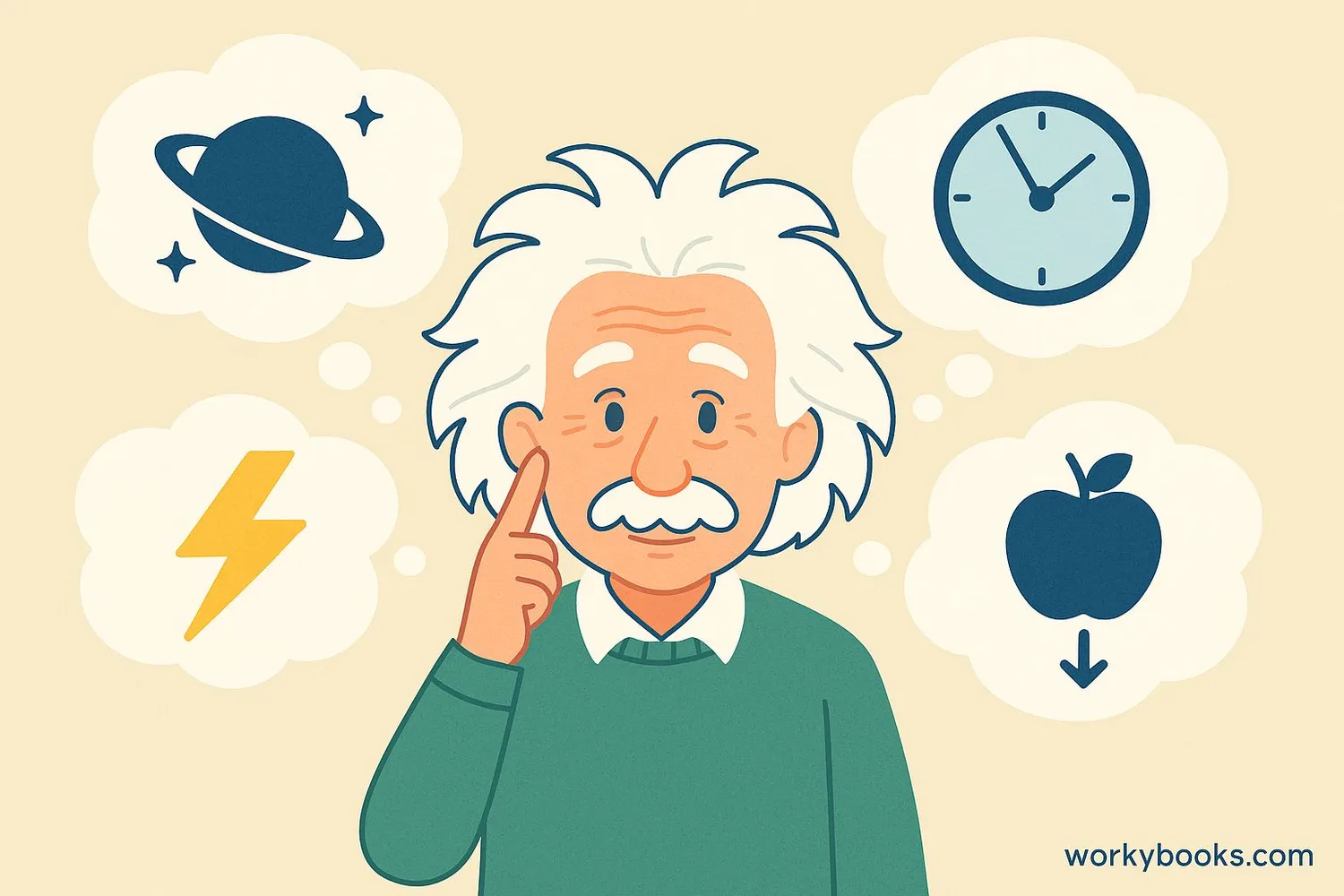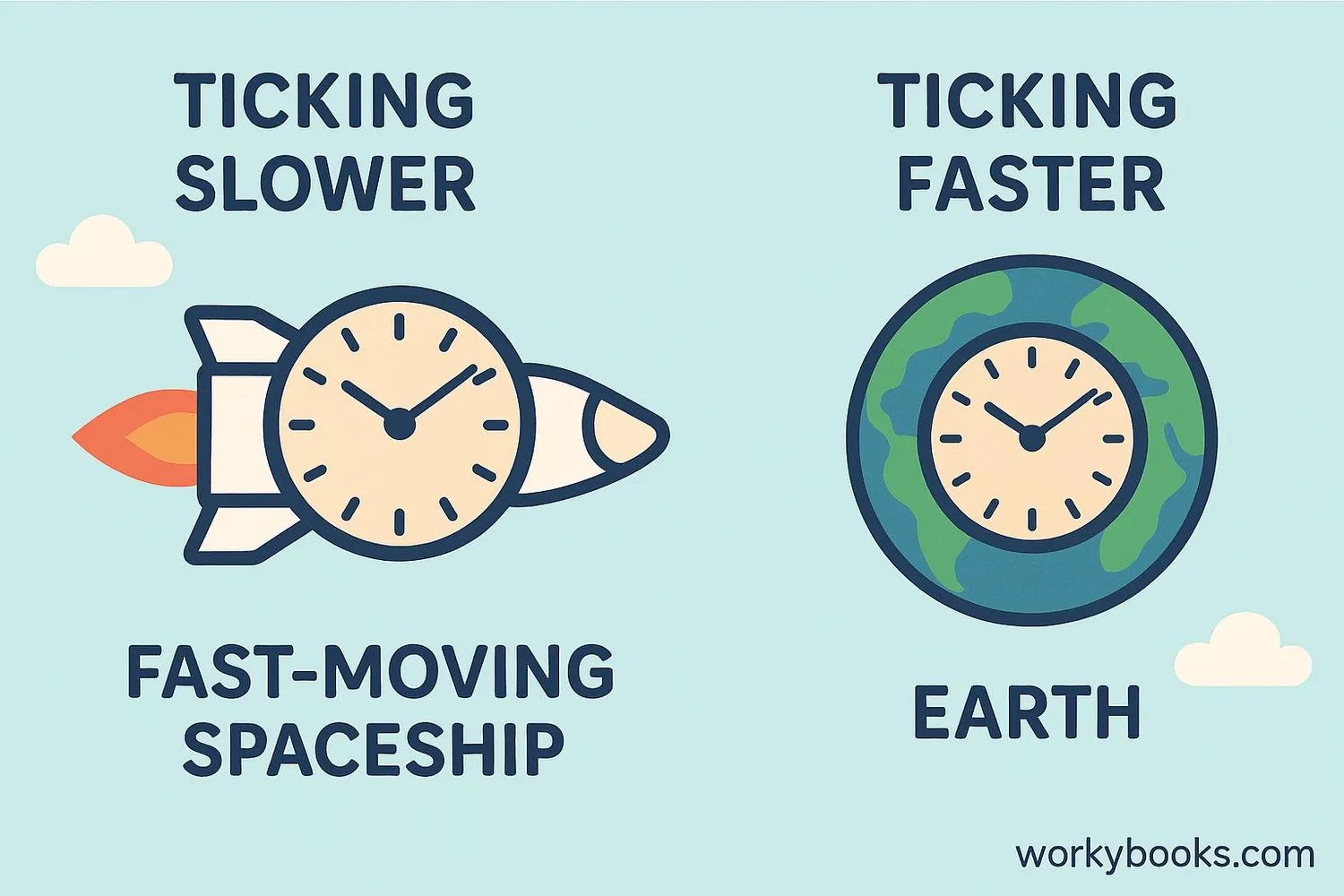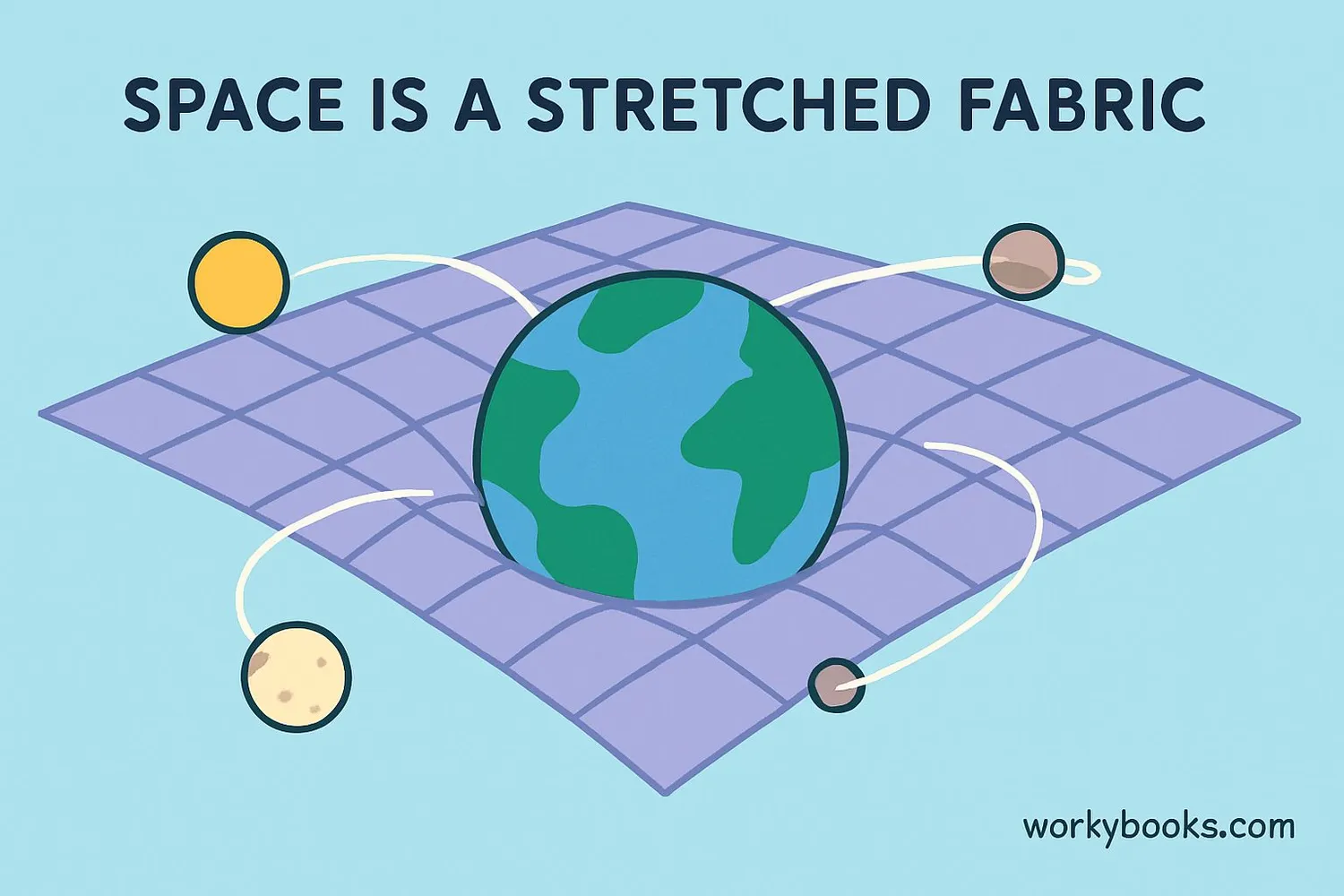Theory of Relativity - Definition, Examples, Quiz, FAQ, Trivia
Discover how time, space, and gravity work together in our universe
What is the Theory of Relativity?

The Theory of Relativity is a physics theory developed by Albert Einstein that changed how we understand space, time, and gravity. It consists of two parts: Special Relativity (1905) and General Relativity (1915).
At its core, relativity shows us that measurements of space and time aren't absolute—they depend on your perspective and motion. What might seem like a fixed amount of time or distance to one person might appear different to someone moving at a different speed.
Key Idea
Relativity teaches us that the laws of physics are the same for all observers, no matter how they're moving, and that the speed of light is constant for everyone.
Special Relativity

Special Relativity deals with objects moving at constant speeds, especially at very high speeds close to the speed of light. Einstein made two important claims:
Constant Light Speed
The speed of light is always the same (300,000 km/s) for all observers
Physics Laws
The laws of physics work the same for everyone
Time Dilation
Time moves slower for objects moving very fast
Length Contraction
Objects appear shorter in the direction they're moving
Mass-Energy
Mass and energy are related (E=mc²)
The most famous equation from special relativity is E=mc², which means energy (E) equals mass (m) times the speed of light (c) squared. This shows that mass can be converted into enormous amounts of energy, which explains how stars shine and how nuclear power works.
Real World Example
GPS satellites must account for time dilation—their clocks run slightly faster than clocks on Earth because they're moving at high speeds in orbit.
General Relativity

General Relativity expands the ideas of special relativity to include acceleration and gravity. Einstein proposed that gravity isn't a force pulling objects together, but rather a curvature of spacetime caused by mass and energy.
Imagine spacetime as a stretched rubber sheet. When you place a heavy object like a bowling ball on it, the sheet curves. Smaller objects rolling nearby will follow the curve, just like planets orbit the Sun due to the curvature of spacetime it creates.
Gravity
Not a force but the curvature of spacetime caused by mass
Orbits
Planets follow curved paths in spacetime around stars
Time Effects
Time runs slower in stronger gravitational fields
General relativity has been confirmed by many experiments, including the bending of starlight during solar eclipses and the precise orbits of Mercury. It also predicts fascinating objects like black holes, where spacetime is so curved that not even light can escape.
Why Relativity Matters

Einstein's theories might seem abstract, but they have real-world applications that affect our daily lives and our understanding of the universe:
GPS Navigation
GPS must account for both special and general relativistic effects to provide accurate positions
Nuclear Energy
E=mc² explains how small amounts of mass can create large amounts of energy
Modern Technology
Relativity affects particle accelerators and other advanced technologies
Beyond practical applications, relativity has transformed our understanding of the cosmos. It helps us study:
• Black holes and their properties
• The expansion of the universe
• Gravitational waves—ripples in spacetime
• The behavior of light around massive objects
• The ultimate fate of the universe
Did You Know?
If we didn't account for relativity in GPS systems, they would be off by about 10 kilometers per day!
Theory of Relativity Quiz
Test your knowledge about Einstein's theories with this quiz. Answer all 5 questions to see how much you've learned.
Frequently Asked Questions
Here are answers to some common questions about the theory of relativity:
Amazing Relativity Facts
Discover some fascinating facts about the theory of relativity:
Time Travel
According to relativity, time travel to the future is possible! If you could travel close to light speed and return to Earth, you would have aged less than people on Earth. This is called the "twin paradox."
Energy in Matter
E=mc² means that a single paperclip contains enough energy to power a medium-sized city for an entire day! The challenge is releasing that energy, which only happens in nuclear reactions.
Black Holes
General relativity predicts black holes—regions of spacetime where gravity is so strong that nothing, not even light, can escape. The first image of a black hole was captured in 2019, confirming Einstein's theory.
Ripples in Spacetime
In 2015, scientists directly detected gravitational waves—ripples in spacetime caused by massive objects like colliding black holes. This confirmed another prediction of general relativity made 100 years earlier.


